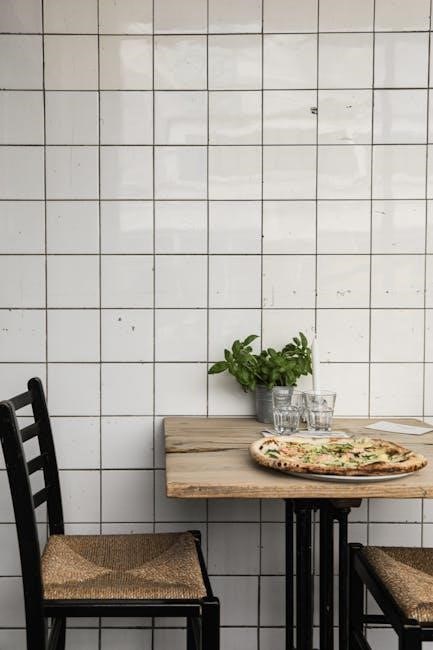Miralax is a commonly used osmotic laxative for bowel preparation in pediatric care, ensuring safe and effective cleansing before procedures․ It is gentle on young patients and widely recommended in clinical settings for its efficacy in resolving constipation and preparing the bowel for medical procedures, making it a trusted solution in pediatric gastroenterology․
Overview of Miralax and Its Use in Pediatric Care
Miralax (polyethylene glycol 3350) is an osmotic laxative commonly prescribed for pediatric patients to treat constipation and prepare the bowel for medical procedures․ Its flavorless and odorless powder is easily mixed with liquids, making it a preferred option for children․ The dosage for pediatric patients is typically 1․5 grams per 10 kilograms of body weight, dissolved in clear liquids to promote bowel clearance without causing electrolyte imbalances․ Miralax is widely used in pediatric care due to its effectiveness and gentle action, avoiding the harsh side effects often associated with other laxatives․ It is a key component in bowel preparation regimens, ensuring both safety and efficacy for young patients․
The Importance of Bowel Preparation in Pediatric Procedures
Bowel preparation is crucial in pediatric procedures to ensure accurate diagnostic results and safe interventions․ Proper cleansing reduces the risk of complications and improves the visibility of the intestinal tract during exams․ For children, this step is especially important due to their smaller anatomy and sensitive digestive systems․ Miralax, as an osmotic laxative, plays a key role in achieving thorough bowel clearance without causing harm․ Effective preparation also minimizes the need for repeat procedures, which can be distressing for young patients․ Ensuring compliance with bowel prep guidelines helps pediatricians achieve optimal outcomes while maintaining patient comfort and safety throughout the process․

Mechanism of Action and Safety Profile
Miralax works as an osmotic laxative, drawing water into the colon to soften stool and promote bowel movements․ It is generally safe for pediatric use with minimal side effects, making it a preferred choice for bowel preparation in children․
How Miralax Works as an Osmotic Laxative
Miralax functions as an osmotic laxative by drawing water into the intestines through osmosis․ This increases the amount of water in the stool, softening it and promoting bowel movements․ Unlike stimulant laxatives, Miralax does not directly stimulate the intestinal muscles, making it a gentle option for pediatric patients․ The active ingredient, polyethylene glycol (PEG), remains in the gut and is not absorbed into the bloodstream, ensuring its effectiveness without systemic side effects․ This mechanism makes it ideal for bowel preparation in children, as it is both safe and effective in resolving constipation and preparing the bowel for medical procedures․
Safety Considerations for Pediatric Patients
Miralax is generally safe for pediatric patients when used as directed․ However, it is crucial to adhere to recommended dosages to prevent potential side effects such as bloating, cramps, or dehydration․ Parents should monitor their child for signs of electrolyte imbalance or allergic reactions, though these are rare․ The solution should be properly mixed with water to avoid gastrointestinal discomfort․ Children with underlying medical conditions, such as renal impairment or intestinal obstructions, require careful evaluation before using Miralax․ Additionally, long-term use should be avoided to prevent dependence․ Always consult a healthcare provider for personalized advice to ensure safe and effective use in pediatric care․
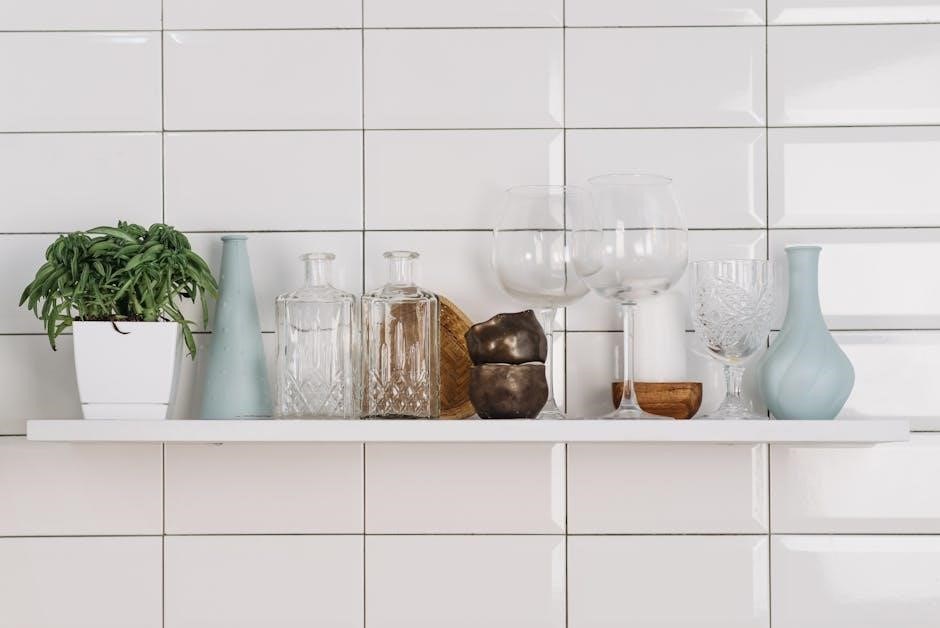
Preparation and Administration Guidelines
Clear liquids only the day before, followed by Miralax solution the morning of the procedure․ Mix with water or clear liquid for easy administration․
Recommended Dosage for Pediatric Patients
The dosage of Miralax for pediatric patients is tailored to the child’s age, weight, and specific medical needs․ Typically, the recommended dose ranges from 1 to 1․5 grams per kilogram of body weight daily, divided into one or two doses․ For children under 6 years, the dose is often lower, starting at 0․5 grams per kilogram and adjusting as needed․ It is crucial to follow the pediatrician’s instructions precisely to ensure efficacy and safety․ Overdosing can lead to dehydration or electrolyte imbalances, while underdosing may result in incomplete bowel preparation․ Parents should consult their pediatrician to confirm the correct dosage for their child․
Proper Mixing and Administration Techniques
For pediatric patients, Miralax should be mixed with 64 ounces of water to ensure proper dosing․ The powder must be fully dissolved to avoid clumping․ Parents should administer the solution gradually, encouraging the child to drink it within 30 minutes․ To improve palatability, flavor packets or a straw can be used․ Caregivers must monitor the child to ensure the entire dose is consumed without interruption․ Proper administration ensures effectiveness and minimizes side effects․ Always follow the prescribed instructions and consult a healthcare provider if difficulties arise․ Proper mixing and administration are crucial for a successful clean-out process in pediatric patients․ Monitoring for any adverse reactions is essential․
Dietary Restrictions Before and During the Clean Out
Dietary restrictions play a crucial role in ensuring the effectiveness of the Miralax clean out process in pediatric patients․ The day before the procedure, children are typically advised to consume only clear liquids, such as water, clear broth, or electrolyte solutions, to minimize residue in the bowel․ Solid foods, especially high-fiber or high-residue foods, should be avoided to prevent interference with the cleansing process․ During the clean out, clear liquids should continue to be the primary source of hydration, and any food intake should be limited to ensure the bowel remains as empty as possible․ Adherence to these guidelines helps optimize the procedure’s success and safety for young patients․
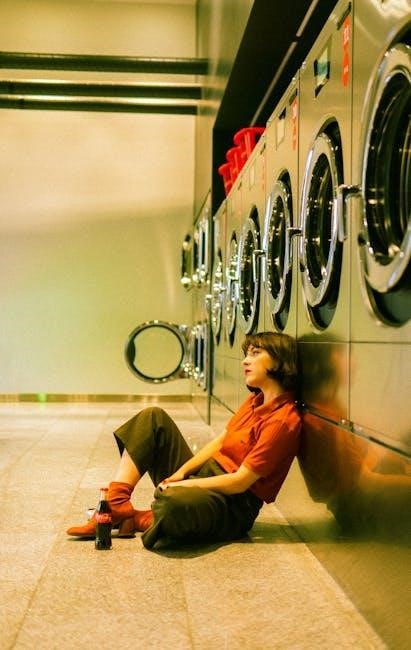
Step-by-Step Clean Out Process
The process involves clear liquids only the day before, followed by administering Miralax solution the morning of the procedure to ensure thorough bowel cleansing for pediatric patients․
Day Before the Procedure: Clear Liquids Only
The day before the procedure, children should consume only clear liquids to begin the bowel preparation process․ This includes water, clear broths, electrolyte solutions like Pedialyte, and clear juices such as apple or grape juice without pulp․ Solid foods and opaque liquids should be avoided to ensure the bowel is not obstructed․ Parents should encourage hydration to prevent dehydration and promote the effectiveness of the Miralax solution the following day․ Clear liquids help soften the stool and prepare the digestive system for the cleansing process․ It is essential to adhere strictly to this diet to achieve optimal results․ The Miralax solution will then be administered the morning of the procedure as directed․
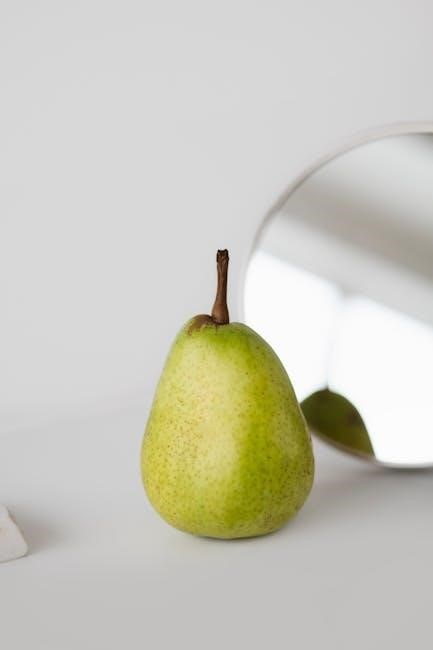
Morning of the Procedure: Miralax Solution
On the morning of the procedure, pediatric patients are typically instructed to consume the Miralax solution․ This step follows the clear liquid diet from the previous day, ensuring the bowel is adequately prepared․ The solution works by drawing water into the intestines, softening stool, and promoting bowel movements․ Parents should administer the prescribed dose as directed by healthcare providers, usually mixed with water to improve palatability․ Monitoring for signs like bloating or cramps is essential․ The solution’s effectiveness is evident through consistent bowel movements, indicating successful preparation․ Proper administration ensures the procedure can be conducted without delays or complications, making it a critical step in pediatric bowel preparation․
Monitoring for Signs of Bowel Clearing
Monitoring for signs of bowel clearing is essential to ensure the effectiveness of the Miralax clean-out process in pediatric patients․ Parents or caregivers should observe for loose, watery stools, which indicate that the bowel is clearing․ The stool may appear pale or have a mucous-like texture․ It is important to track the frequency of bowel movements, as this helps determine if the clean-out is progressing as expected․ Additionally, monitoring for any adverse reactions, such as abdominal pain, bloating, or dehydration, is crucial․ Parents should be advised to contact their healthcare provider if they notice any unusual symptoms or if bowel movements do not occur as anticipated․ Proper monitoring ensures the child’s safety and the success of the procedure․
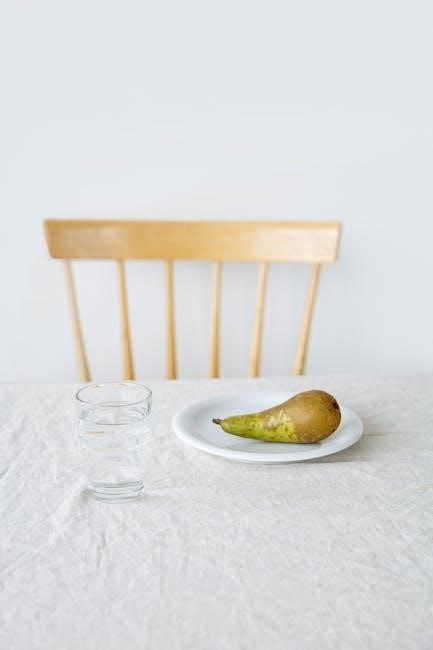
Common Side Effects and Management
Common side effects include bloating, cramps, and gas․ Management involves adequate hydration, monitoring symptoms, and adjusting dosage if needed․ Severe reactions require medical consultation․
Expected Side Effects in Pediatric Patients
Common side effects of Miralax in pediatric patients include mild gastrointestinal discomfort, such as bloating, gas, or abdominal cramps․ Some children may experience nausea or vomiting․ In rare cases, diarrhea or electrolyte imbalances can occur, particularly with improper dosing or prolonged use․ These side effects are typically temporary and resolve once the medication is stopped․ Severe reactions, such as allergic responses or dehydration, are uncommon but require immediate medical attention․ Parents should monitor their child for excessive thirst, dizziness, or severe stomach pain, as these may indicate dehydration or other complications․ Consulting a healthcare provider is crucial if side effects persist or worsen․
When to Seek Medical Attention
Parents should seek immediate medical attention if their child experiences severe abdominal pain, vomiting, or signs of dehydration during or after the Miralax clean out․ If the child shows bloody stools, severe diarrhea, or no bowel movement within 24-48 hours, consult a healthcare provider․ Additionally, if the child appears lethargic, has excessive thirst, or reduced urine output, urgent care is needed․ Persistent constipation or failure to clear the bowels despite proper Miralax use warrants medical evaluation․ Always contact the pediatrician if there are concerns or unexpected symptoms, as these may indicate underlying issues requiring further investigation or alternative treatment approaches․

Contraindications and Special Cases
Miralax is contraindicated in pediatric patients with bowel obstructions, gastrointestinal tears, or severe electrolyte imbalances․ Caution is advised for children with renal issues or allergic reactions․
Pediatric Conditions Where Miralax Is Not Recommended
Miralax is not recommended for pediatric patients with certain conditions․ These include intestinal obstruction, severe constipation unrelieved by other treatments, and active inflammatory bowel disease․ It should also be avoided in children with renal impairment or those at risk of electrolyte imbalances․ Additionally, Miralax is contraindicated in cases of severe dehydration or vomiting, as it may worsen hydration status․ Always consult a pediatrician before using Miralax to ensure it is safe and appropriate for the child’s specific condition․
Alternative Options for Bowel Preparation
When Miralax is not suitable, other laxatives like lactulose, senna, or magnesium citrate may be considered for pediatric bowel preparation․ Lactulose is a sweet syrup that promotes water retention in the colon, gently stimulating bowel movements, making it a popular alternative for children․ Senna, a natural laxative, works by stimulating the intestines but may cause cramping․ Magnesium citrate is another option, acting quickly to clear the bowel but may not be as well-tolerated by young patients․ Each alternative has specific benefits and potential side effects, requiring careful consideration based on the child’s health status and medical history․ Consulting a pediatrician is essential to determine the most appropriate choice․

Parental Education and Support
Parental education is crucial for successful bowel preparation․ Clear instructions and reassurance help parents manage their child’s routine, ensuring proper administration and reducing anxiety during the process․
Importance of Parental Involvement in the Process
Parental involvement is crucial for the success of a Miralax clean out in pediatric patients․ Parents play a key role in ensuring the child adheres to the prescribed regimen, monitors for side effects, and maintains hydration; Clear communication between parents and healthcare providers helps address concerns and ensures proper preparation․ Parents are also essential in preparing the Miralax solution correctly and administering it as directed․ Their involvement in monitoring the child’s bowel movements and overall well-being ensures the process is both safe and effective․ Active participation by parents fosters a supportive environment, reducing anxiety for the child and ensuring the best possible outcome for the procedure․
Providing Reassurance and Addressing Concerns
Addressing parental concerns is crucial for a smooth Miralax clean out process․ Parents often worry about their child’s discomfort or the effectiveness of the treatment․ Reassurance should focus on the safety and efficacy of Miralax, emphasizing its gentle nature and proven track record in pediatric care․ It’s important to explain the importance of bowel preparation and how it ensures accurate procedure results․ Parents should be advised on how to manage minor side effects, such as bloating or cramping, and encouraged to maintain open communication with healthcare providers․ Providing clear instructions and emotional support can help alleviate anxiety and ensure adherence to the treatment plan․
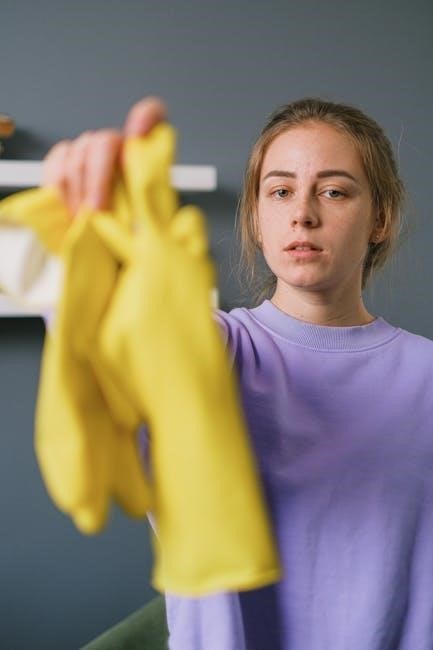
Monitoring and Follow-Up
Monitor stool consistency and ensure bowel clearing is complete․ Post-procedure, assess hydration and watch for adverse effects, ensuring proper follow-up care for optimal recovery and comfort․
Assessing the Effectiveness of the Clean Out
Assessing the effectiveness of the Miralax clean out involves monitoring stool consistency, frequency, and the absence of solid material․ Clear liquids and the Miralax solution help achieve a clear bowel․ Parents should monitor for signs like loose, watery stools or the absence of solid stool, indicating successful preparation․ Clinical evaluation may include checking for the presence of clear stool, which confirms bowel readiness․ If stool remains solid or incomplete, additional doses or alternative methods may be considered․ Effective assessment ensures the procedure can proceed safely, minimizing complications․ Parental involvement is crucial for accurate feedback and timely adjustments, ensuring the clean out meets medical requirements․ Proper assessment is key to a successful outcome․
Post-Procedure Care and Hydration
After the procedure, it is crucial to focus on hydration and gradual reintroduction of foods to restore normal bowel function․ Parents should ensure their child drinks plenty of fluids, such as water or clear broths, to replenish lost electrolytes․ Monitoring for signs of dehydration, such as dry mouth or reduced urination, is essential․ A bland diet, including foods like bananas or toast, can help ease the child back to regular eating․ Encouraging physical activity may also aid in recovery․ Parents should avoid giving fatty or heavy meals immediately post-procedure․ If the child experiences persistent discomfort or dehydration, medical advice should be sought promptly to prevent complications․
Comparative Analysis with Other Laxatives
Miralax is often compared to other laxatives, with advantages like gentler action and fewer side effects, making it a preferred choice for pediatric bowel preparation compared to alternatives․
Advantages of Miralax Over Other Pediatric Laxatives
Miralax stands out as a preferred choice for pediatric bowel preparation due to its gentle, non-invasive mechanism and minimal side effects․ It is flavorless and odorless, making it easier for children to tolerate compared to other laxatives with unpleasant tastes․ Miralax works without causing cramps or bloating, which are common with stimulant laxatives․ Its effectiveness in softening stools without leading to dependency makes it a safer option for long-term use․ Additionally, Miralax is readily available over-the-counter, offering convenience for parents․ Its ability to promote a natural bowel movement without harsh chemicals aligns well with pediatric care goals, ensuring both safety and efficacy for young patients․
Limitations and Potential Drawbacks
While Miralax is effective for bowel preparation, it has limitations․ Common side effects include bloating, cramps, and gas․ In some cases, pediatric patients may experience electrolyte imbalances due to its osmotic effects․ Additionally, Miralax is not suitable for children with renal impairment or those who are dehydrated․ Its lack of flavor can make administration challenging for young patients․ Furthermore, prolonged use or improper dosing may lead to dependence or worsen constipation․ Some studies suggest potential neurological side effects, though these are rare and not fully understood․ Parents should be cautious and follow medical guidance to avoid complications, ensuring proper hydration and adherence to prescribed regimens․
Case Studies and Clinical Evidence
Clinical trials and case studies demonstrate Miralax’s effectiveness and safety in pediatric bowel preparation, with positive outcomes in easing constipation and ensuring procedure readiness in children․
Success Stories in Pediatric Bowel Preparation
Many pediatric patients have benefited from Miralax clean out, achieving effective bowel preparation with minimal discomfort․ Clinicians report high success rates, with children tolerating the solution well and completing procedures without delays․ Parents often appreciate its gentle nature, avoiding the distress associated with harsher alternatives․ Success stories highlight reduced need for repeat procedures due to incomplete cleansing․ Such positive outcomes reinforce Miralax as a reliable choice for pediatric bowel preparation, supporting both medical effectiveness and patient comfort․
- Gentle and effective for young patients․
- High satisfaction among parents and clinicians․
- Reduces procedure delays and repeats․
Clinical Trials Supporting the Use of Miralax
Clinical trials have demonstrated the effectiveness and safety of Miralax in pediatric patients․ A 2010 study published in the Journal of Pediatrics evaluated Miralax for bowel preparation in children, showing high success rates with minimal side effects․ Another trial involving over 200 pediatric patients confirmed that Miralax is well-tolerated and effective for constipation relief․ These studies highlight Miralax’s ability to promote consistent bowel movements without the harsh side effects often associated with other laxatives․ The evidence supports its use as a first-line treatment for pediatric bowel preparation, making it a trusted option for healthcare providers․ Miralax’s efficacy has been consistently validated, reinforcing its role in pediatric care․

FAQs and Common Concerns
Common questions include safety concerns, proper dosage, and side effects․ Parents often ask about effectiveness and alternatives, seeking reassurance for their child’s comfort and well-being during the process․
Addressing Frequently Asked Questions by Parents
Parents often have questions about administering Miralax to their children․ Common inquiries include the safety of Miralax, the correct dosage, and how to mix the solution properly․ Many parents also ask about signs that the clean out is working, such as increased bowel movements or stool consistency changes․ Concerns about side effects, like bloating or cramping, are frequently raised․ It’s important to reassure parents that these are typically mild and temporary․ Additionally, parents may seek guidance on how to encourage their child to drink the solution and how to manage resistance․ Clear communication and support can help alleviate fears and ensure the process goes smoothly for both the child and the family․
Clarifying Misconceptions About Miralax
Some parents believe Miralax is unsafe for children, but clinical evidence supports its safety and efficacy in pediatric care․ Another misconception is that Miralax causes dependency; however, it is designed for short-term use and does not lead to physical dependence․ Additionally, concerns about electrolyte imbalances are unfounded when used as directed․ Miralax is not absorbed into the bloodstream, making it a gentle option for children․ These misconceptions often stem from misinformation, so proper education is essential to ensure its safe and effective use in pediatric bowel preparation․
and Key Takeaways
Miralax effectively and safely prepares pediatric patients for procedures, offering a reliable solution for bowel cleansing with minimal side effects, making it a preferred choice in pediatrics․
Miralax clean out is a widely used method in pediatric care to prepare the bowel for medical procedures, ensuring effective and safe cleansing․ It involves administering an osmotic laxative to promote bowel movements, helping clear the intestines․ The process is designed to be gentle on children, minimizing discomfort while achieving the desired results․ Proper preparation, including dietary adjustments and clear liquid intake, is essential for success․ Miralax is favored for its ease of administration and ability to reduce the risk of complications․ Parents play a crucial role in adhering to guidelines and monitoring their child’s response․ This approach has proven effective in clinical settings, offering a reliable solution for pediatric bowel preparation․
Final Recommendations for Pediatricians and Parents
Pediatricians should prescribe Miralax with clear dosage instructions and emphasize proper preparation to avoid complications․ Parents should ensure their child adheres to the prescribed schedule, monitors for side effects, and maintains hydration․ Clear communication about the importance of the clean-out process is essential to reduce anxiety․ Parents are encouraged to use favorite flavors to mask the taste of Miralax, improving compliance․ Reassurance and education on potential side effects can alleviate concerns․ Follow-up appointments should be scheduled to assess the effectiveness of the clean-out and address any lingering issues․ Collaboration between pediatricians and parents ensures a safe and successful experience for pediatric patients․
